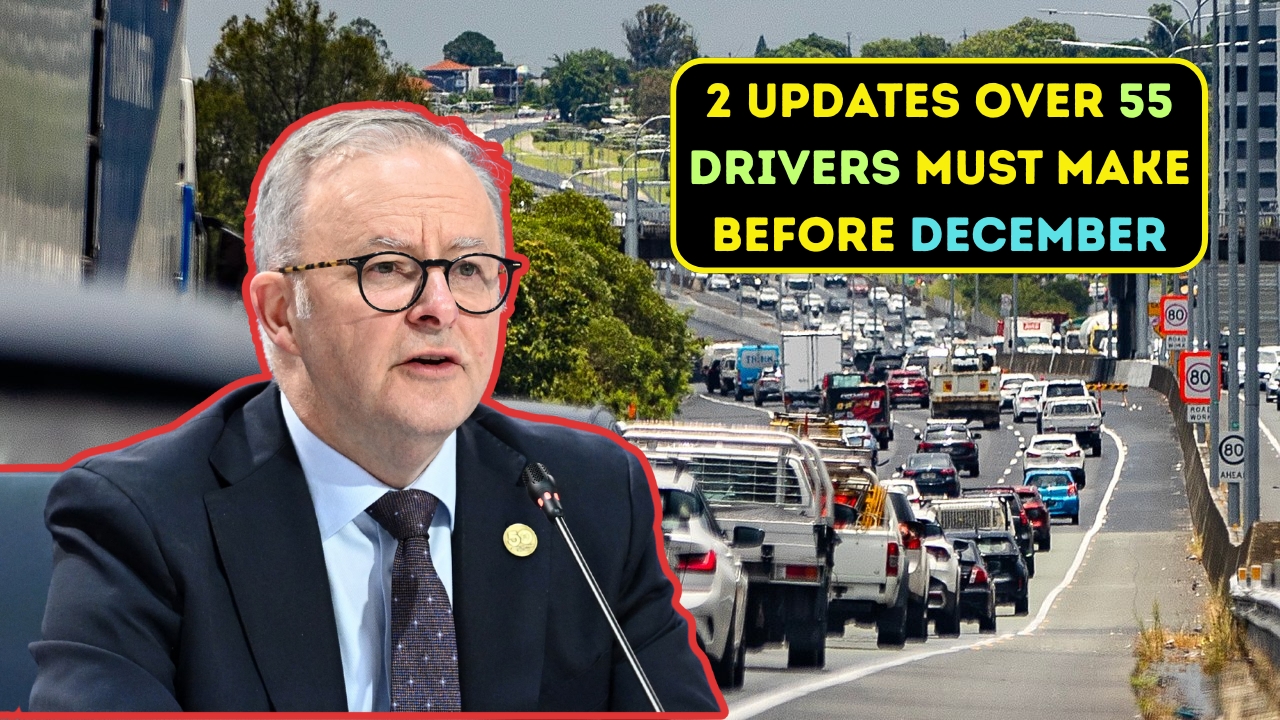If you’re over 55 and still enjoying the freedom of the open road in Australia, there’s some important news you can’t afford to ignore. The government has introduced two key traffic rule updates that specifically affect senior drivers, and both must be complied with before December 2025. Honestly, these changes may feel like yet another box to tick, but in reality, they’re designed to improve road safety and keep older drivers more confident behind the wheel.
To be fair, Australia already has one of the most regulated driving systems in the world, especially when it comes to age-based licensing. But these two fresh requirements are particularly significant. If you don’t take the necessary steps, you could risk fines, licence restrictions, or even suspension. Let’s break it down clearly so you know exactly what’s expected and how you can prepare without the stress.
1. Mandatory Medical Assessment for Drivers Aged 55+
The first major update is the introduction of a compulsory medical check-up for drivers aged 55 and above. Previously, most states only enforced annual medical assessments from the age of 75. However, recent road safety reports revealed that certain age-related conditions—like slower reflexes, vision impairments, and even early cognitive decline—were appearing earlier than expected.
So, the new rule states that once you hit 55, you’ll need to provide a medical clearance from your doctor to continue holding a valid driver’s licence. It’s not as daunting as it sounds—think of it more like a preventive health measure than a punishment.
Your GP will likely test your eyesight, reaction times, blood pressure, and general mobility. In some cases, you may be asked to undergo a quick vision test at an optometrist or even a driving assessment if concerns are raised.
Honestly, this is less about restriction and more about reassurance. If you’re fit and healthy, you’ll sail through it. But if something crops up, it’s better to catch it early rather than risk an accident.
2. Mandatory Car Safety Feature Upgrade
The second update focuses not on the driver, but on the vehicle itself. From December, all drivers over 55 will be required to ensure their cars are fitted with at least two modern safety features:
- Lane Departure Warning (LDW)
- Autonomous Emergency Braking (AEB)
Now, don’t panic—this doesn’t mean you need to rush out and buy a brand-new car tomorrow. Instead, you’ll need to either upgrade your current car with these features (where possible) or switch to a vehicle that already includes them. Many newer cars have these technologies as standard, but older models might require retrofitting or, in some cases, replacement.
The reason? Statistics show that older drivers are more likely to drift unintentionally between lanes or have slower braking responses in emergencies. These features act as an extra pair of eyes and hands—alerting you to danger and, in some cases, even taking action before you can.
Yes, it might feel like yet another expense, but it’s one that could save lives—including your own. Plus, there’s some good news: several states are introducing rebate schemes and subsidies to help older drivers cover part of the cost of these safety upgrades.
Why These Changes Matter
At first glance, both of these updates may sound like a hassle. But on the flip side, they’re being introduced for a reason. Data from the Department of Infrastructure and Transport shows that drivers over 55 are involved in a higher percentage of lane-drift accidents and slower-response collisions compared to younger groups.
These rules are intended to extend your safe driving years, not shorten them. Think of them as an investment in your independence. After all, being able to drive comfortably into your 60s, 70s, and beyond means you can stay connected, mobile, and less reliant on public transport or family.
What Happens If You Don’t Comply?
If you fail to complete your medical assessment or upgrade your vehicle before December, you may face:
- Licence suspension or restrictions (such as daylight-only driving).
- Fines for non-compliance.
- Potential insurance issues if you’re involved in an accident.
It’s far easier—and much less stressful—to tick these off your list now rather than scrambling at the last minute.
Key Updates for Over 55 Drivers
| Requirement | Who It Affects | Deadline | What to Do |
|---|---|---|---|
| Medical Assessment | All drivers aged 55+ | Before December 2025 | Visit your GP, complete health and vision check |
| Car Safety Upgrade (LDW + AEB) | Drivers 55+ with cars lacking features | Before December 2025 | Retrofit safety features or switch to compliant vehicle |
Yes, change can be frustrating—especially when it comes wrapped in red tape. But in this case, the updates are about protecting you, your passengers, and other road users. If you’re over 55, make December your checkpoint: book that GP appointment, check your car’s safety features, and take advantage of any government subsidies that may ease the cost.
Because at the end of the day, staying on the road safely is worth far more than the temporary inconvenience.
FAQs
1. Do all states in Australia apply these rules?
Yes, the updates are being rolled out nationally, though minor state-level differences may exist.
2. What if my car is too old to upgrade with LDW or AEB?
In that case, you’ll likely need to switch to a newer vehicle that already has them installed.
3. How often do I need the medical assessment after 55?
Currently, it’s an annual requirement, but this may change depending on your health.
4. Will the government cover the cost of safety upgrades?
Some states are offering rebates or subsidies—check with your local transport authority.
5. Can I still drive if I don’t comply by December?
No, your licence may be suspended until both updates are completed.




